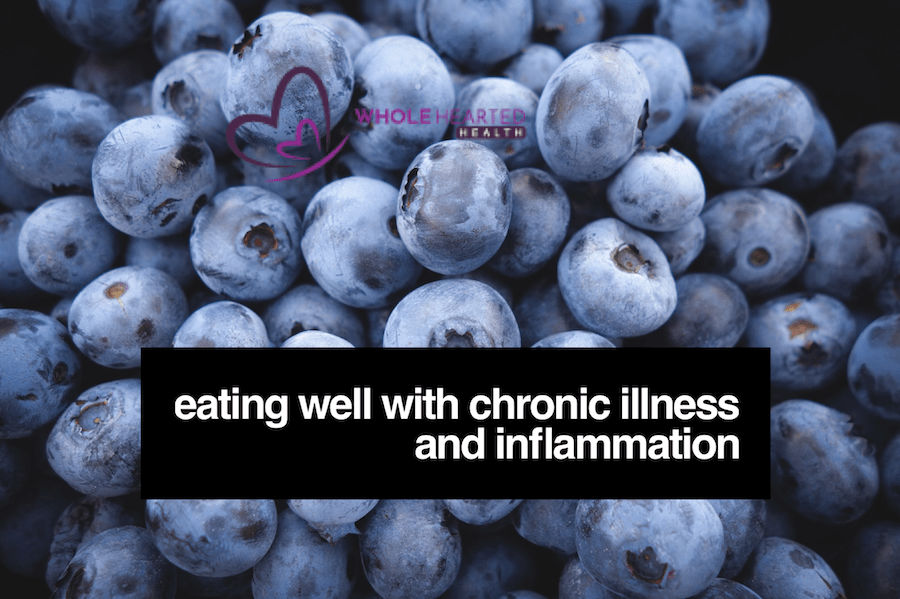
There are so many women who fight chronic illness and fatigue that it seems to be an epidemic of sorts. I have friends and family diagnosed with an arrangement of illnesses from celiac to IBS to a variety of autoimmune diseases. While I am not a registered nurse or dietician, I have done much research on how what we eat affects our body. Of course, everyone is different and when diagnosed, you as an individual, need to figure out what works best for you.
I was diagnosed with fibromyalgia and chronic fatigue when I was 27 years old. My test results explained a lot of the symptoms, but the doctors always wanted to prescribe the newest medication and didn’t focus on the entire picture of my life. As a newlywed, I was tired all the time and my joints and muscles were always sore. When I look back now, it’s hard to see that I could have done so much better for myself. However, I am now at a place where I have the information to make better choices and so that’s my passion … to help other women live their best life – even with a grim diagnosis.
Eating well with chronic illness can be extremely challenging.
When you are not feeling well and tired all the time, the last thing you want to do is make the effort to improve your diet. However, there are simple ways to make the subtle changes in what and how you are eating. Short-cuts like using frozen or canned vegetables can help a ton in preparing a meal. Some evidence shows these are very nutritious options because they are frozen or canned at the peak of freshness. If you are nauseous, eating smaller meals and more often is a great idea. Trim Healthy Mama encourages you to eat every 3 – 4 hours and this keeps your metabolism strong. On good days, try bulk cooking and freezing to have an easy choice for busy nights.
One major thing I always do is keep an assortment of fresh snacks available. This helps when I am hungry not to be tempted by junk food. Some ideas are:
- Greek yogurt with frozen berries
- Cut up veggies with hummus
- Cucumber slices with laughing cow cheese and seasonings
- Chopped apple with a sprinkle of Truvia and cinnamon
- Small amount of mixed nuts
Like a lot of other people with autoimmune disabilities, I follow some version of an anti-inflammatory “diet” because it means less pain and fatigue. It is important to know:
There is no “one-size-fits-all” quick fix.
Here are some foods that help with inflammation:
- Fresh produce. Think COLORS! It’s great to be conscious of “eating a rainbow” of fruits and veggies. Some examples are berries, cherries, red cabbage, and apples.
- Herbs and spices. Turmeric, thyme, oregano, basil, and parsley are fantastic additions to your meal plan.
- Healthy fats like Extra Virgin Olive Oil and Coconut Oil.
- Fish! Especially salmon, tuna, and sardines.
Also be aware of your inflammation triggers!
There are habits in your routine that could help you get through your day. For me, I need to make sure I get enough sleep. I need a minimum of 8 hours to feel rested and refreshed. Daily exercise is one thing I must fit in so that I’m not exhausted by 3 PM. Also, I try to focus on stress reduction. Life is always so busy, but I take the time in the morning to pray and meditate. It’s important to prioritize when you have a lot on your plate. Taking time in the morning to do this makes a huge improvement to my day. I like to journal and make a to-do list with what is most important for that day. I also enjoy yoga and stretching. This is another vital key that helps get my blood circulating and reduces my blood pressure.
Try avoiding “nightshade” vegetables.
Fruits and vegetables from the nightshade family are staple foods for many people. Nightshades are nutritious, healthful foods, but they contain solanine, a chemical which some people believe may aggravate arthritis pain or inflammation. These vegetables include potatoes, tomatoes, peppers and eggplant. It wouldn’t hurt to experiment to see if these affect your pain and inflammation.
When you think about it, nutrition isn’t rocket science.
Eat a lot of fresh, nutrient dense food with bright colors. Encourage healthy snacking throughout the day. Buy organic when possible. Cut out foods that cause inflammation. For myself, I need to cut out all white sugar and flour. I have taken the time to experiment and listen to my body and what it needs (and what it doesn’t need). It’s always worth investing in your health and well-being. Taking the time to do this will help with daily activities and ensure a full and energetic life.
